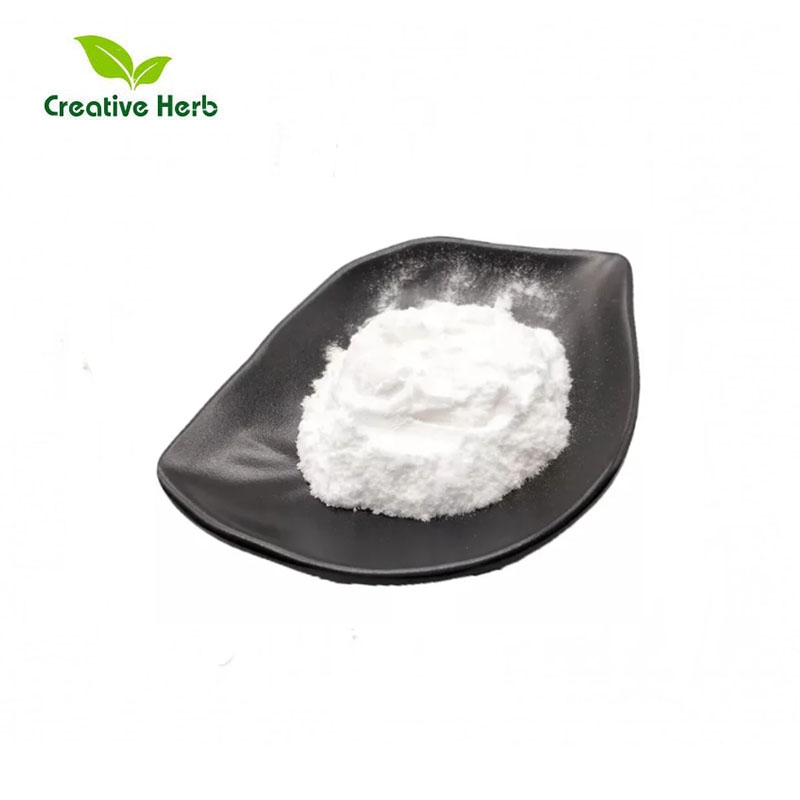-
Categories
-
Pharmaceutical Intermediates
-
Active Pharmaceutical Ingredients
-
Food Additives
- Industrial Coatings
- Agrochemicals
- Dyes and Pigments
- Surfactant
- Flavors and Fragrances
- Chemical Reagents
- Catalyst and Auxiliary
- Natural Products
- Inorganic Chemistry
-
Organic Chemistry
-
Biochemical Engineering
- Analytical Chemistry
-
Cosmetic Ingredient
- Water Treatment Chemical
-
Pharmaceutical Intermediates
Promotion
ECHEMI Mall
Wholesale
Weekly Price
Exhibition
News
-
Trade Service
June 2, 2020 /
Bio-Valley
BIOON /-2019 New Acute Respiratory Disease 2019 Coronary Virus Disease (COVID-19)COVID-19 is caused by severe acute respiratory syndrome type 2 coronavirus (SARS-CoV-2)COVID-19 has been declared a pandemic by the World Health Organization and continues to spread globallyMost patients recover within 1 to 3 weeksHowever, a small number of people (? 5%) develops a serious disease, which in turn can lead to acute respiratory distress syndrome (ARDS), which in turn leads to deathCurrently, only supportive care is available; One way to identify treatments is to use approved drugs for other purposes, using existing human pharmacology and toxicology details to make it possible to rapidlyclinical trialsand regulatory reviewscoronavirus is a single-stranded RNA virus that infects vertebrates and spreads across different host speciesWith the advent of SARS-CoV-2, seven coronaviruses are now known to infect humansFour of these viruses (HCoV-229E, HCoV-OC43, HCoV-NL63 and HCoV-HKU1) cause about 30% of common cold cases in humansTwo of these have led to recent epidemics and have a considerable correlation with mortality: SARS-CoV-1, which occurred in 2002-2003, resulting in a mortality rate of ? 10%; MERS-CoV, which appeared in 2012, is still active, causing? 35% of the mortality rateCompared to COVID-19, these two epidemics affect only a relatively small number of patientsCOVID-19 is more contagious due to asymptomatic carriers, long incubation periods and high infectiousness Prior to COVID-19, only SARS-CoV-1 and MERS-CoV caused serious illness As a result, there is relatively little development of coronavirus drugs than other viral diseases, such as influenza Given the rapid spread of COVID-19 and its relatively high mortality rate, it is urgent to fill the gap in coronavirus-specific drugs the coronavirus life cycle involves a large number of potential pathway steps, including intra-swallowing into host cells (involving angiotensin-converting enzyme 2 (ACE2) and transmembrane protease filine (TMPRSS2), RNA replication and transcription (involving decyclonease and RNA-dependent RNA polymerase (RdRp), translation and proteolytic processes (involving ceacoidase samples and paella-like) In addition to virus-coded targets, many host targets are essential for virus replication and disease progression the cell receptor of SARS-CoV-2 is ACE2 Recombinant ACE2 (rhACE2, or APN01) is currently under development for the treatment of acute lung injury and pulmonary hypertension, and has demonstrated good tolerance in a phase-in trial of healthy volunteers rhACE2 has been shown to significantly reduce the entry of viruses into human cell-derived organs, which may act as bait for viral binding This supports clinical trials that are investigating the use of APN01 to block the virus from entering PATIENTs with COVID-19 Successful virus entry requires protein hydrolysis to treat the virus's protogy glycoprotein (S protein), which can be performed by TMPRSS2 The TMPRSS2 inhibitor camostat is approved in Japan for the treatment of gastric reflux after chronic pancreatitis, generally with good tolerance and rare and serious side effects Both carousel and the associated nafamostat can prevent the replication of SARS-CoV-2 in human cells that express TMPRSS2 Carmots has been shown to block SARS-CoV-2 infection scans in mouse models Therefore, there are good reasons to support the
clinical trials of these drugs for COVID-19, which have been launched in the Netherlands and Germany picture source: Science coronavirus uses an endolyutosis pathway to enter cells before it is shelled Chloroquine (CQ) and hydroxychloroquine (HCQ) are antimalarial drugs that affect body function and block autophagetinoid-lysosome fusion Both drugs have been shown to inhibit SARS-CoV-2 replication in cell models Azithromycin (AZ) is a widely used, wide-spectrum antibiotic that also prevents the removal of autophagy neuters in human cells and the replication of Zika virus and influenza viruses in human cells in vitro Preliminary results from a small randomized trial of HCQ in patients with COVID-19 showed that the recovery time was reduced A small open label trial showed a lower viral load in patients with HCQ and AZ combination strains compared to COVID-19 patients who received a combination of HCQ and AZ alone, although the study was heavily criticized for removing several subjects from the study's analysis These hypothesis-producing studies have proven that emergency approval of their use in the United States to treat COVID-19 is justified, and both drugs are widely used in the United States However, both HCQ and AZ have potential cardiac toxicity (QT extension can lead to fatal arrhythmia), and HCQ also has a potentially negative impact on the eyes Understanding the risk-benefit ratio is critical if these drugs are to become the standard for the treatment of COVID-19 Several post-mortem analyses conducted in the United States and Europe showed that HCQ single-drug treatment for COVID-19 patients had limited benefits at best; Given the fundamentals of this mechanism, but the lack of well-designed clinical studies and the potential for drug-induced toxicity, it is necessary to conduct controlled, randomized trials to test the efficacy and safety of these drugs in PATIENTs with COVID-19 after decrusted, viral genomic RNA is used to produce two peptides in the translation of hat dependence, and then from protein hydrolysis to produce several viral proteins, including RdRp and two proteases While proteases may seem attractive targets, they are more distant lying to other viral proteases The combination of HIV protease inhibitors lopinavir and litonavir has been shown to be ineffective in patients with COVID-19, the same combination of the same use as in previous SARS-CoV-1 diseases Therefore, further use of such drugs is not reasonable -- although there are other protease inhibitors for coronavirus proteases in early drug development The production of replication complex proteins, including decyclonease and RdRp, allows the genome replication of viruses and the production of subgenome RNA, which is also translated to produce structural proteins and shell proteins Decyclone asses are theoretically an attractive target, but they differ from other viral decycloneases, and there is no evidence that herpes simplex virus decyclonease inhibitors amenamevir or pretelivir are effective for coronaviruses RdRp simultaneously replicates and transcribes viral RNA, making it a clear target for blocking the life cycle of the virus Since RdRp is a key protein for many viruses, some broad-spectrum RdRp inhibitors may be approved or in the clinical trials , including Redsievir and favipiravir Redciewe was originally used to treat the yellow virus that causes Ebola and Marburg virus, and has been shown to be safe in the past two Ebola outbreak trials However, it does not have the effect of the Ebola virus as antibody-based treatments, which prevent the virus from entering human cells Subsequently, in animal models, Redciewe was shown to be active in both SARS-CoV-1 and MERS-CoV Favipiravir was developed for influenza and was approved in Japan in 2014, especially for new pandemic influenza outbreaks In in vitro experiments on human cells, both Redsievir and favipiravir were effective against SARS-CoV-2 Redcywe has been advancing rapidly in several COVID-19 clinical trials, and current clinical data suggest that the drug is safe and effective in patients with COVID-19 However, it is reasonable and necessary to use further RRp inhibitors in randomized, controlled trials the most reasonable drugs used to treat COVID-19 patients are the drugs HCQ, AZ, camostat and nafamostat for host factors, as well as the virus drugs Ridsivir and favipiravir for RdRp Some other drugs are also under consideration, although there is little evidence (biovalleybioon.com) Reference: Rapid repurposing of drugs for COVID-19.
Science 08 May 2020: eabb9332 DOI: 10.1126/science.abb9332
2 T S Fung, D X Liu, Corona Humanvirus: Host-Interact Origin
n Annu Rev Microbiol 73, 529 (2019)
G Li, E De Clercq, Options for the 2019 Novel Coronavirus (2019-nCoV) Nat Rev Drug Discov 19, 149 (2020.
D H Tran et al., Azithromycin, a 15-member macrolide Antibiotic, Inhibits Influenza A (H1N1) pdm09 Virus By-Process With Virus
J Antibiot 72, 759 (2019)
M Renna et al., Azithromycin Blocks Autophagy and May Prestic Fibrosis Patients to Mycoca.
J Clin Invest 121, 3554 (2011)







